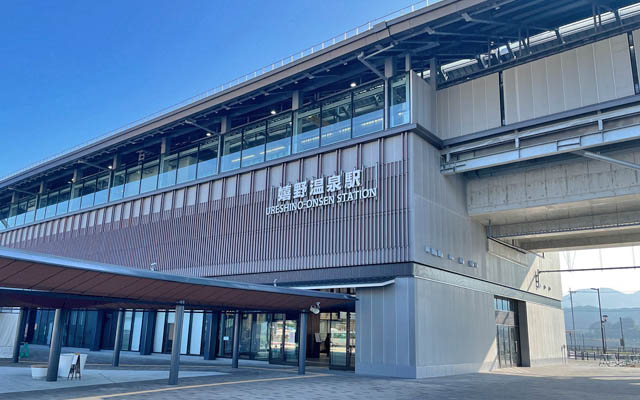Western Kyushu’s tourism infrastructure is receiving a boost thanks to JR Kyushu’s recent and ongoing investment in high-speed rail links, specialty trains and hotel facilities.
The first stage of development saw JR Kyushu launch a new bullet train line linking Saga and Nagasaki prefectures and unveil a tourism train, Two Stars 4047, which will follow a coastal route in the same area.

The 66km-long Nishi-Kyushu Shinkansen line will improve travel times and connectivity in a large area of rural western Kyushu by linking Takeo-Onsen and Nagasaki stations. It will call at Ureshino-Onsen, home to one of Japan’s top three hot springs for beautiful skin; Shin-Omura, which is renowned for cherry blossom viewing, and Isahaya, the site of Important Cultural Property, Megane Bridge.
Two Stars 4047, which operates on the coast between Takeo-Onsen (Saga Prefecture) and Nagasaki City, is tailor-made to offer optimum views of the seaside and serves fresh local cuisine. It is therefore expected to attract tourists seeking slow tourism, which focuses on sustainability, purposeful experiences and personal wellness.
According to a JR Kyushu official, travellers on the train can enjoy views of Omura Bay, green tea fields and other beautiful landscapes.
JR Kyushu’s developments are intended to “revitalise local economies and increase visitors” by making the region more accessible, Yoji Furumiya, president of JR Kyushu, said at a press conference as he outlined company plans to build two new hotels around the Nishi Kyushu Shinkansen line.
Plans are also underway for JR Kyushu to link the Saga Prefecture stations of Takeo-Onsen and Shin-Tosu, which are situated on the Kyushu Shinkansen line linking Hakata Station in Fukuoka Prefecture and Kagoshima-Chuo Station in Kagoshima Prefecture. This would further facilitate easier and quicker travel within Kyushu.
The Kyushu Shinkansen line, which was commenced in 2003 and completed in 2011, served 14.5 million passengers in 2019.




















